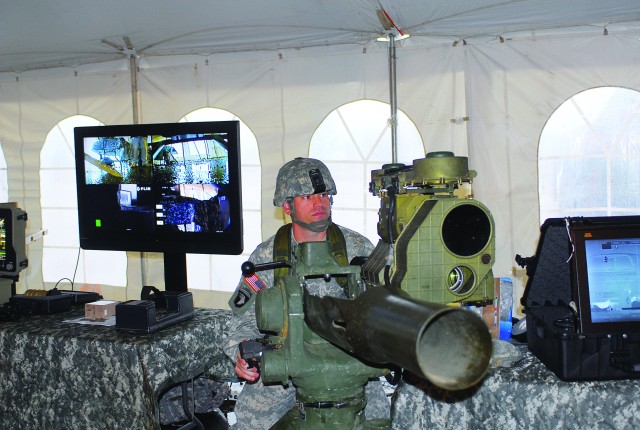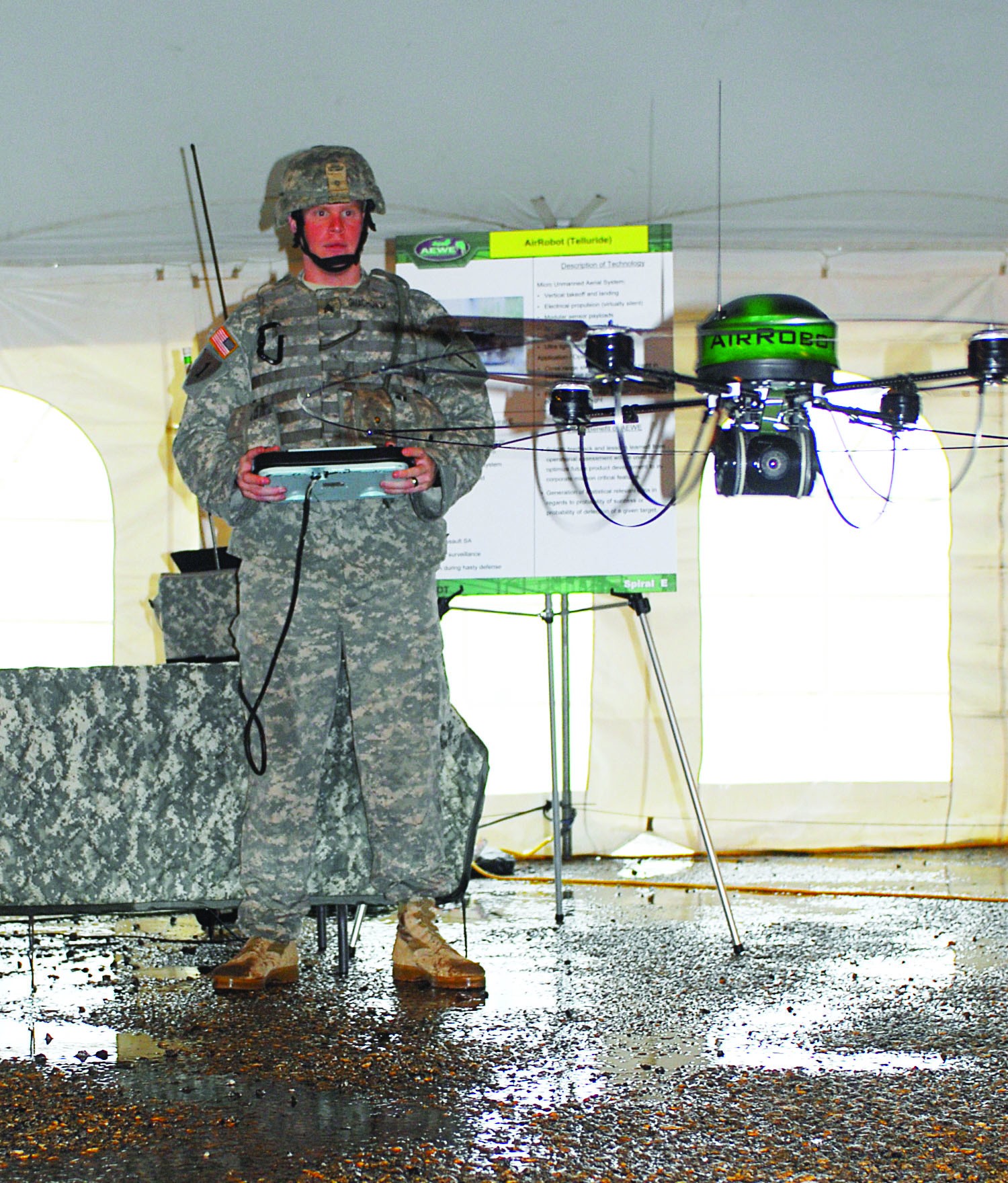The annual Army Expeditionary Warrior Experiment concluded this week with an open house on McKenna military operations on urban terrain site Wednesday that showcased more than 30 kinds of technology.
The open house presented an opportunity for industry and military leaders to learn about the uses and advantages of technology studied during the experiment, said Harry Lubin, chief of Fort Benning's Live Experimentation Division with the Maneuver Battle Lab.
Now in its fifth year, the experiment focused on the impact of network technology on small units.
"We're still evaluating the results, but clearly there is a significant advantage to having network technology where information is readily available when needed to small unit leaders," Lubin said.
"What we're finding is that it significantly improves lethality, survivability and effectiveness on the battlefield."
Technologies included everything from glare-resistant sunglasses and ground sensors to hybrid military vehicles and armed robots. Some of the products, such as the Land Warrior System, have been used in combat.
Others were only prototypes. "There are times when you have to have boots on the ground, but a lot of times, it's not worth putting the Soldier on the ground to investigate something when you have the capabilities to employ a robot," said Staff Sgt. Brian Tidwell, who used some of the new technology in combat.
Some of the technology improved on existing equipment. The Improved Target Acquisition System is not new to the Army. However, a modification to the system lets a Soldier send data, including photographs, back to headquarters via a network, said Staff Sgt. Cory Campo, who was part of the Experimental Force, Company A, 1st Battalion, 29th Infantry Regiment.
Campo said the addition would help enhance a unit's situational awareness. Soldiers in EXFOR assess the technology's viability by testing it in full-scale tactical missions.
"The key to what we do is Soldier feedback," Lubin said. "It's a lot better to get the Soldiers' input early in the process than to wait until the end when you're ready to field it. That's the neat thing about our experiment. We're focused on capabilities. Even if it's not quite ready to go to the field, we can still look at it and provide feedback."
The experiment, which costs more than $4 million annually, is critical to the Army's modernization, Lubin said. The assessment reports will be published in March.




Social Sharing